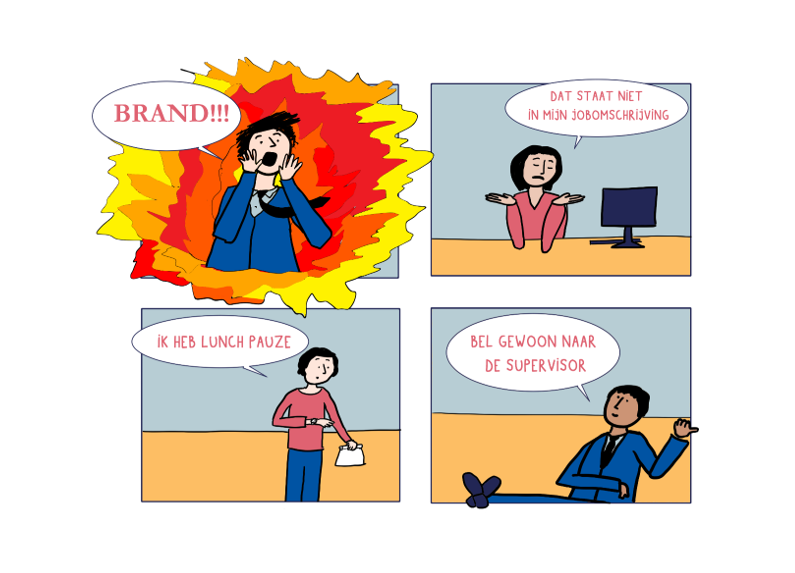
Part 4: A Touch of Magic
Obeya. Is it just another passing LEAN trend or an indispensable foundation for every organization? In this 5-part blog series, we delve into the fascinating world of Obeya. Discover how Stanwick leverages this approach in future-proof transformations. This part focuses on effective leadership.
In the previous parts of this blog, we established a solid team structure and clear guidelines. But what else is needed to create a successful autonomous team? We need a touch of magic, and the team members themselves are responsible for it. A successful Obeya is the result of ownership. It requires a change in mindset, behavior, and culture. People change because they believe in it, not because we tell them to. To bring people along in this transformation, we need good leaders.
"The great leaders are like the best conductors; they reach beyond the notes to reach the magic in the players." Blaine Lee Pardoe
While we could write volumes on this topic, we will touch on a few aspects in this blog:
Team collaboration: where can Obeya support?
A few Obeya principles are crucial for achieving the desired team collaboration, such as:
- Go to gemba: Go and see where the problem occurs.
- Keep it simple.
- Rhythm, regularity, and calmness.
- Avoid a check-the-box meeting culture.
- Foster a no-blame culture.
In the context of team autonomy, it is important to grant teams the mandate to establish their own team principles. Trained teams will undoubtedly identify the right team principles. Provide guidance, but do not impose principles on them.
Creating Engagement: where can Obeya support?
The most challenging aspect of the Obeya transformation is creating engagement and ownership among the teams. This is an aspect that you cannot entirely control. It is a choice that employees make to take ownership or not. However, as good leaders, there are several things we can do to increase engagement:
- Invest in mindset training. Employees who understand the purpose and approach will encounter less resistance or may even become champions of the transformation.
- Start small. Ensure that teams have some small responsibilities and can achieve quick results. This builds trust in the process.
- Maximize co-creation. Involve employees from the beginning of the transformation. Help them design their own Obeya.
- Communication is key. Organize sufficient feedback sessions with the teams to listen to them. Encourage reflection on their Obeya practices.
Delegate responsibility to core teams. Define Obeya improvement aspects together with the teams, such as board content, team meetings, improvement boards, meeting culture, etc. Empower core teams and provide them with the time and mandate to develop these areas. Ensure there is a good coach to support them.
Your Leadership Style: where can Obeya support?
Is there a specific leadership style that fits the Obeya concept? Since this is a transformation where teams go through different stages of change, one leadership style is not enough. As a leader, you must adapt your leadership style to the team, the individual, and the stage of change the team is in.
Regardless of the leadership style, the following behaviors are important for leaders in this transformation:
- Lead by example. How can you expect a team to take responsibility and ownership if the top of an organization doesn't apply the principles themselves? Leading by example is perhaps the only truly top-down approach. It goes beyond doing a few things; it's about who we are and what we want to see in our teams.
- Trust. Autonomous teams need space to experiment, learn, and make mistakes. This requires openness and trust throughout the organization, especially from management. When teams are not given the mandate to be autonomous, trust breaks down.
- Know when to let go. It's an exercise in balance. Letting go too early leads to a laissez-faire culture and employees feeling lost. Holding on for too long creates a sense of being stifled and hampers ownership.
"The art of conducting consists in knowing when to stop conducting to let the orchestra play." Herbert von Karajan
The perfect leader doesn't exist. However, great leaders distinguish themselves from good leaders by continuously developing themselves and their teams. Don't be afraid to be yourself, but strive to be the best version of yourself.
In the last part of this blog series, all the puzzle pieces come together as we discuss the system that keeps everything running smoothly. What are the keys to success, and what are the pitfalls during the Obeya transformation project?
Obeya - how do we setup the Obeya room? Read more in part 5
Did you miss the previous blogs?
Obeya - what is the team structure and the escalation structure? Read more in part 2
Obeya - what are the roles? Read more in part 3
If you have any specific questions, please visit our website or contact us. Stanwick is here to support your future-proof transformation!
Annelies Boecxstaens


